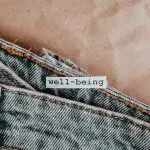Absolutely, I think chiffon is super comfy to wear! It's lightweight and has this airy feel that's perfect for keeping cool on hot days. Plus, it's so smooth against the skin, which is a big plus for comfort. Whether I'm dressing up for a fancy event or just throwing on something casual, chiffon is versatile enough to work with both. It's also breathable, so I don't feel all stuffy when the weather's humid. Just keep in mind that it's a bit sheer and delicate, so handling it gently helps it last longer. There's a bunch more interesting stuff about chiffon that can really give you some neat outfit ideas!
Table of Contents
Key Takeaways
- Chiffon's lightweight and airy nature ensures comfort and breathability, making it pleasant to wear.
- Its open weave allows for increased airflow, which helps keep the skin cool and comfortable.
- The fabric's smooth texture feels gentle and soothing against the skin, enhancing comfort.
- Quick-drying properties of chiffon make it suitable for humid climates, maintaining comfort throughout wear.
- Versatility for layering without bulkiness allows for easy adaptation to different temperatures and occasions.
Understanding Chiffon Fabric
Chiffon is a lightweight, sheer fabric that's often made from silk or synthetic fibers like polyester. It's got this amazing grace and flow to it, which makes it a favorite for a lot of flowy dresses and scarves. You know, the ones that twirl perfectly in a summer breeze. But don't let its delicate appearance fool you; chiffon can be surprisingly durable, especially when it's made from synthetic materials.
The secret behind chiffon's lightness lies in its weave. It's made using a plain, loose open weave with slightly twisted yarns, which gives it a slight puckering effect in both directions. This technique allows chiffon to be airy yet maintain a strong structure. It's not just about looking good; this fabric works hard too.
Handling chiffon can be a bit tricky because of its slippery nature. Cutting and sewing require a gentle hand and a bit of patience. But once you've mastered working with it, the possibilities are endless. You can create pieces that drape beautifully and move like a dream. So, yeah, it's worth the effort if you're aiming for garments with a bit of elegance and flow.
The Origins of Chiffon
So, let's talk about where chiffon came from.
It's not just a fancy fabric; it has a pretty cool history that started way before it became the go-to for elegant dresses and scarves.
From its early days to how it's evolved, there's a lot to cover about chiffon's journey.
Chiffon Fabric Development
While we often enjoy chiffon's light and airy feel today, its development actually began back in the early 20th century. Interestingly, it was originally made from silk, making it a luxury few could afford. As technology and textile manufacturing evolved, so did the accessibility of chiffon. By the mid-20th century, synthetic fibers like nylon and polyester were introduced, making chiffon more affordable and widely available. This evolution massively increased its popularity.
Here's a quick look at chiffon's fabric development timeline:
| Year | Material | Impact |
|---|---|---|
| 1900s | Silk | Premium, less accessible |
| 1938 | Nylon | More durable, slightly cheaper |
| 1950s | Polyester | Cheaper, widely available |
| 1970s | Blended fibers | Enhanced qualities |
| 2000s | High-tech synthetics | Superior durability, feel |
As you can see, each step in the fabric's development brought chiffon into more closets around the world!
Early Uses of Chiffon
Let's dive into how chiffon was first used, tracing its origins back to the luxurious world of early 20th-century fashion. Initially, this elegant fabric graced the scenes of high society, becoming a staple for evening gowns and delicate blouses. It was the go-to material for designers who wanted to add a touch of sophistication and flow to their creations. Imagine those glamorous parties where the lightness of chiffon fluttered effortlessly with every move!
Chiffon's airy quality and sheer texture also made it popular for scarves and lingerie, providing just enough coverage while keeping things chic and light. It wasn't just about looks; the practicality of chiffon in layering outfits also played a big part in its early use.
Modern Chiffon Evolution
Building on its early glamour, chiffon's evolution hasn't just stayed in the past but has adapted to modern fashion needs and trends. It's moved from just sheer evening wear to a staple in everyday wardrobes, thanks to its lightweight and breathable qualities. Designers have gotten really creative with it, mixing chiffon with other materials and enhancing its durability without losing that classic, airy feel we all love.
Here's a quick look at how chiffon is being used today:
| Era | Use | Innovation |
|---|---|---|
| Early 1900s | Evening gowns | Pure silk |
| Mid 1900s | Scarves, blouses | Synthetic blends |
| 2000s | Dresses, skirts | Eco-friendly dyes |
| Present | All-occasion wear | Digital printing |
This fabric isn't just surviving; it's thriving by adapting to the latest tech and eco-conscious practices.
Chiffon's Unique Texture
Let's talk about what makes chiffon so special.
First off, it's incredibly lightweight, which gives it that airy feel that's just a dream in warm weather.
Plus, its sheer elegance really adds a touch of class to any outfit.
Lightweight, Airy Feel
Chiffon's unique texture gives it a lightweight, airy feel that's incredibly comfortable to wear. The fabric's breeziness can't be overstated—it's like wearing a soft whisper. As someone who's always on the move, I find chiffon's weightlessness perfect. It doesn't cling or weigh me down, making it ideal for long days or warm weather.
Here's why chiffon really stands out:
- Breathability: It allows your skin to breathe more so than heavier fabrics, reducing discomfort and stickiness on hot days.
- Versatility: Its light nature means it can be layered without getting bulky.
- Comfort: The smoothness of the fabric against the skin feels gentle and soothing.
It's a go-to choice for comfort without sacrificing style.
Sheer Elegance Factor
While we admire chiffon for its lightweight comfort, its sheer texture also adds an unmistakable touch of elegance. This unique characteristic isn't just about looking good; it's about feeling amazing, too. The way chiffon's fabric drapes and flows can make anyone feel like they're gliding instead of just walking. It's not just any fabric—it's a statement piece that whispers class and sophistication.
The sheer quality of chiffon gives it a subtle allure, playing peek-a-boo with the skin beneath, which is perfect for those who love a hint of mystery in their outfits. Whether it's a scarf, blouse, or a gown, chiffon adds that extra layer of finesse, transforming simple looks into something truly captivating. It's no wonder it's a staple for those elegant evenings!
Breathability of Chiffon
One of the standout features of chiffon is how breathable it is, making it a top choice for comfortable, airy outfits. When I'm picking out what to wear, especially on those warmer days, chiffon is a go-to because honestly, who wants to feel like they're wrapped in plastic wrap? Not me!
The breathability of chiffon comes from its unique fabric characteristics. Here's what makes it stand out:
- Loose Weave: Chiffon's weaving is less dense compared to many other fabrics. This loose weave allows air to flow through the fabric more freely, helping to reduce the buildup of heat and moisture on your skin.
- Lightweight Nature: The fabric is incredibly light, which adds to its ability to breathe. It doesn't cling to your body, allowing for better air circulation around your skin.
- Moisture Absorption: Although chiffon isn't the most absorbent material out there, it does manage moisture reasonably well compared to heavier fabrics. This means it can help wick away a bit of sweat, keeping you cooler and more comfortable.
Chiffon in Various Climates
Now, let's talk about how chiffon holds up in different weather conditions.
I've worn chiffon in the sweltering heat of the tropics, the biting cold of winter, and even in sticky, humid weather.
Each scenario really tests chiffon's versatility and comfort level.
Chiffon in Tropical Heat
Chiffon's lightweight and breathable qualities make it a surprisingly good choice for staying cool in tropical heat. I've found that when I'm traveling or living in areas with high humidity and scorching temperatures, chiffon is a go-to fabric. It doesn't cling to my skin, which is a huge plus, allowing air to circulate more freely and keeping me cooler than many other materials.
Here's why chiffon stands out in the tropics:
- Airiness: The sheer, open weave of chiffon fabric means more air flow around your body.
- Moisture Wicking: It dries quickly, reducing discomfort from sweat.
- Versatility: Perfect for both casual and formal attire, adapts easily to any style.
Chiffon in Cold Weather
Despite its benefits in warmer climates, chiffon mightn't be the best choice for cold weather due to its lightweight nature. It's thin and doesn't trap heat, which means you'll likely feel the chill unless you layer up significantly.
I've found that while chiffon dresses or blouses are fantastic for summer breezes, they just don't cut it when the temperature drops. If you're set on wearing chiffon in colder conditions, consider pairing it with thermal leggings, a cozy sweater, or a solid jacket. That way, you can keep the elegant, flowy look of chiffon while staying warm.
Also, it's crucial to choose darker colors or layered chiffon styles to help retain some heat.
Chiffon in Humid Conditions
In humid conditions, chiffon is surprisingly effective at keeping you cool and comfortable. Its lightweight nature allows air to circulate freely, which helps in reducing the stickiness that often comes with high humidity. Here's why it works so well:
- Breathability: Chiffon's loose, airy weave means your skin can breathe. You don't feel like you're wrapped in a sauna suit!
- Moisture Wicking: It dries quickly compared to heavier fabrics. No more uncomfortable dampness sticking to your body.
- Versatility: Whether it's a breezy blouse or a flowing dress, chiffon garments are stylish yet practical for humid weather.
Durability Factors
While chiffon might look delicate, it's surprisingly durable when properly cared for. Now, let's get into why that's the case. Chiffon's strength mainly comes from the materials used to make it, which are typically silk, polyester, or a blend of both. These fibers are woven in a way that, despite the fabric's light and airy appearance, provides a good deal of resistance against wear and tear.
Now, if you're like me and love to get the most out of your wardrobe, you'll appreciate that chiffon doesn't easily snag or unravel. This is a huge plus because it means your favorite pieces can handle a bit of rough and tumble. However, it's not all invincible. The fabric's sheer nature means it can still catch on sharp objects if you're not careful.
Another point to consider is the color retention of chiffon. This fabric holds dye well, so it doesn't fade as quickly as some others might. That's great news if you're investing in a vibrant piece you plan to wear over and over.
Chiffon Care Instructions
Caring for chiffon isn't tough, but it does require some special attention to keep it looking its best. I've learned a few tricks along the way to ensure that my chiffon pieces stay in pristine condition. Whether you're dealing with a sleek blouse or a flowy dress, handling this fabric properly is key to extending its life and maintaining its beauty.
Here's what you've gotta remember:
- Washing Techniques
- Always opt for hand washing chiffon with a mild detergent. If you must use a machine, place the garment in a mesh laundry bag and select the gentle cycle with cold water.
- Drying Methods
- Never wring out chiffon; it can lead to wrinkles and damage. Instead, lay it flat on a towel and roll up the towel gently to absorb excess water. Unroll and air dry the chiffon away from direct sunlight.
- Ironing Guidelines
- Use a low heat setting and always place a cloth between the iron and the chiffon fabric. This prevents direct contact and potential heat damage.
Styling With Chiffon
Styling with chiffon lets you effortlessly elevate any outfit, whether you're dressing up for a formal event or keeping it casual. I've found that it's all about choosing the right pieces and pairing them smartly. For a laid-back look, I love throwing a lightweight chiffon blouse over jeans. It adds a touch of femininity and goes great with flats or sneakers.
When I'm out for coffee or a casual meet-up, I often opt for a chiffon top with interesting details like ruffles or a bold print. It's easy to mix with basics, and it breathes well, so I stay comfortable all day. For those breezy days, a chiffon scarf can be a game-changer. It's not just about warmth; it's about adding layers and colors to your look without bulk.
Layering is key with this fabric. A sheer chiffon kimono over a tank top can work wonders for an outfit's texture and depth. And don't shy away from accessories! A simple chiffon piece can be dialed up with the right necklace or a pair of earrings. Remember, chiffon's charm lies in its flow and simplicity, so let these elements shine through your ensemble.
Chiffon for Formal Wear
Chiffon also steps up beautifully for formal events, where its elegance truly shines in dresses and gowns. When I'm picking out something special for a big night out, chiffon is my go-to fabric. It's not just about looking good; it's about feeling good too. Chiffon's lightweight nature means it hangs just right, making it a flattering choice for all body types. Plus, it dances as I move, adding that extra touch of grace to every step.
Here's why chiffon is perfect for those extra special occasions:
- Flowy Elegance: Chiffon's natural drape creates soft, fluid lines that exude a sophisticated charm. It's all about that dreamy, floaty feel that makes you look like you're gliding across the room.
- Versatile Style: Whether it's a sleek, fitted silhouette or a billowy, layered look, chiffon adapts. It can be decked out with sequins for some sparkle or kept simple for understated elegance.
- Breathability: Despite its luxe appearance, chiffon is surprisingly breathable. This means you won't just look cool; you'll feel cool too, even when the event's packed or the dance floor gets hot.
Daily Comfort in Chiffon
I've found that wearing chiffon daily is surprisingly comfy, thanks to its light and airy feel. It's like a soft whisper against the skin, making it a go-to choice, especially during warmer months. The fabric's breeziness keeps me cool when the sun's out in full force, which is a huge plus.
Chiffon's flowy nature also means it doesn't cling to the body too much. This is great for those busy days when I'm running errands or hopping from one meeting to another. It moves with me, rather than restricting my movements, which adds an extra layer of comfort that's hard to beat.
Another thing I love about chiffon is its versatility. Whether I'm dressing up for a quick coffee with friends or a casual day at the office, chiffon pieces are super easy to style. They pair well with both jeans and more formal skirts, making it simple to switch up my look without sacrificing comfort.
Chiffon and Skin Sensitivity
While most people find chiffon gentle on the skin, those with sensitivities might experience some discomfort. It's a bummer, but it's true. Chiffon, known for its light and airy feel, can sometimes be a bit tricky for folks with more reactive skin. I've learned a thing or two about why this happens and how to deal with it.
Here's the lowdown:
- Fabric Finish: Sometimes, the finishing chemicals used on chiffon can irritate sensitive skin. These chemicals are meant to give chiffon that smooth, slippery feel, but they can be a nightmare for skin that doesn't play well with synthetic substances.
- Fiber Content: Chiffon is often made from silk or synthetic fibers like polyester. While silk is generally hypoallergenic, synthetic fibers can be less so. They don't allow your skin to breathe as well, leading to irritation especially if you're wearing it all day under the sun.
- Weave Tightness: The tight weave of chiffon, while fabulous for creating that elegant, floaty look, can restrict airflow to the skin. This might cause sweating and chafing, which isn't exactly a picnic for anyone, especially if you're prone to skin issues.
Understanding these aspects can help you navigate the choice of wearing chiffon more comfortably. Remember, it's all about knowing what works for your skin!
Alternatives to Chiffon
If you're looking for alternatives to chiffon, there are plenty of other fabrics that can offer comfort without sacrificing style. Let's dive into some options that might just become your new favorites.
First up, we've got georgette. It's similar to chiffon in its drape and feel, but it's slightly heavier which makes it less sheer and offers better coverage. It's fantastic for those flowy dresses and blouses where you want a bit of a breezy look without the translucency of chiffon.
Then there's cotton voile. It's lightweight, breathable, and super soft against the skin. If you're after something that feels great and keeps you cool on a hot day, cotton voile should be on your radar. Plus, it's quite durable and easy to care for, making it a practical choice too.
Silk is another luxurious option. It provides a similar ethereal quality to chiffon but with a bit of added sheen and richness. It's perfect for those special occasions where you want to feel fancy without compromising on comfort.
Don't forget modal — a type of rayon that's ultra-soft and much more resistant to shrinkage and fading than traditional rayon. It's a superb choice for everyday wear.
Exploring these alternatives to chiffon could really elevate your wardrobe and comfort levels, all while keeping you stylish!
Frequently Asked Questions
Can Chiffon Be Dyed at Home Effectively?
Yes, I've found that you can dye chiffon at home, but it's a bit tricky. You'll need the right type of dye and technique to ensure the fabric doesn't lose its delicacy.
Are There Eco-Friendly Versions of Chiffon Available?
Yes, there are eco-friendly chiffon versions made from recycled materials or natural fibers like silk. I've found they're just as luxurious, supporting sustainability without compromising on style or comfort. Worth checking out!
How Does Chiffon React to Static Electricity?
Chiffon tends to cling due to static, which can be pretty annoying. I've found that using a mild fabric softener or a static spray helps reduce the cling when I'm wearing it.
Can Chiffon Be Used for Sportswear Designs?
I wouldn't recommend chiffon for sportswear, as it's not durable or moisture-wicking. It's great for flowy, breathable garments but doesn't hold up well in intense activities where performance fabrics are better suited.
Is Chiffon Production Sustainable for the Environment?
Chiffon's production isn't exactly green; around 20% of global wastewater comes from textile manufacturing. I reckon that's huge, making me think twice about how sustainable wearing that flowy, light fabric really is.
- Is Chiffon Comfortable to Wear? - April 23, 2024
- How Do You Unwrinkle Chiffon? - April 23, 2024
- What Material Is Best for Hot Weather? - April 23, 2024








